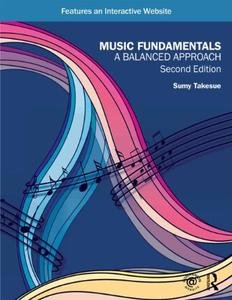Music Fundamentals - A Balanced Approach, 2 edition

English | 2013 | ISBN: 0415621968, 041562195X | 472 pages | PDF | 12.5 MB
Music Fundamentals: A Balanced Approach, Second Edition comprises a textbook/workbook and interactive website designed for those who want to learn the basics of reading music. Intended for students with little or no prior knowledge of music theory, it offers a patient approach for reading, writing and even performing music. Musical examples range from Elvis Presley songs to Beethoven symphonies, from rhythmically challenging African songs and syncopated Brazilian choro melodies, to humorous Filipino ballads and Schubert lieder. The website includes graded quizzes and numerous skill training exercises.
By reinforcing musical concepts with numerous written examples, offering a more balanced mixture of global, classical, and popular music, and encouraging practice through an online, interactive tutorial, Music Fundamentals: A Balanced Approach, Second Edition is a comprehensive textbook for building musical foundations.
Second Edition Features:
Modular structure allows instructors to reorganize chapters.
A variety of exercises help the student transform knowledge into practice:
Listen and sing exercises for ear training
Keyboard drills to be played on a real keyboard or piano, or the keyboard insert provided in the inside cover
Clapping and counting exercises to ingrain a cerebral understand, but also a visceral feeling for pulse and rhythm
Workbook review exercises at the end of each module facilitate progress to the next module.
"Cultural Notes" discuss musical genres or place musical examples in a broader social context to give an enriched approach to music learning.
Online tutorials assist with ear training and general concepts, and streaming of audio examples help to connect the study of theory to real music-making.
The website features student interactive tutorials, and an Instructor Manual supplements teaching with a wealth of classroom exercises.
Extract RAR5 archives
The majority of unpackers do not support the new RAR5 format. You will receive an error message when you try to open it, and there is usually no way to integrate it manually into the application to add support for it.
So, the only feasible option right now is to install Winrar 5.x on your system if you want to use a graphical user interface. Note that this is a trial version, and while it won't stop working after the trial runs out, it will nag you to upgrade the software.
